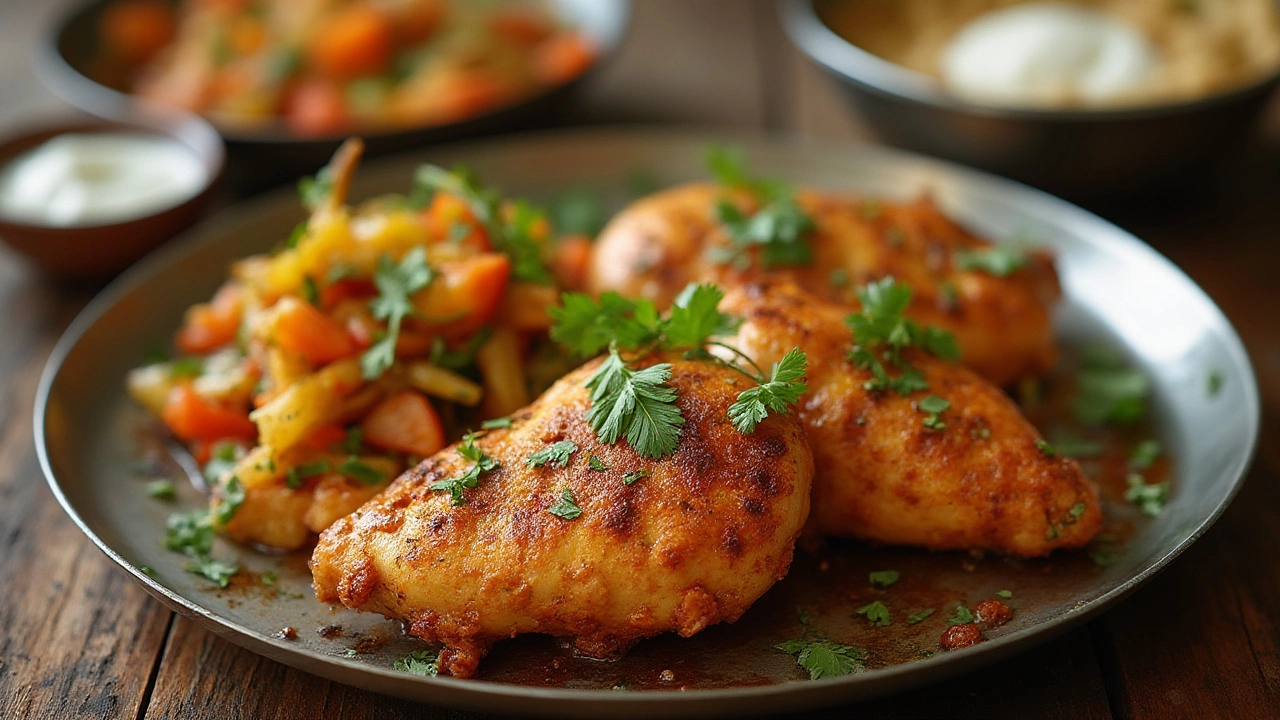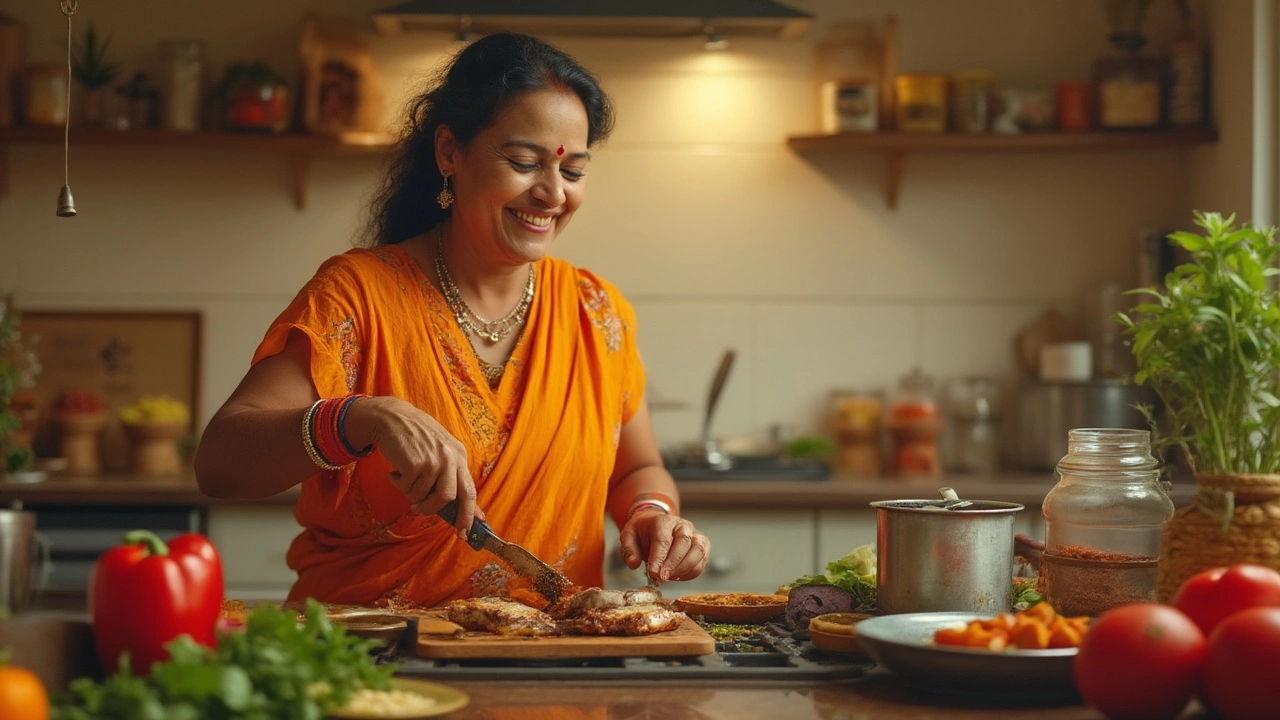Chicken lands on dinner tables across the world, and for people watching their blood sugar, it’s usually seen as one of the good guys. When my mum was first diagnosed with type 2 diabetes, it was the one meat all the dieticians seemed excited about. But does it matter which part of the bird you pick—or how you cook it? Yes, definitely. I learned through a string of WhatsApp group debates, doctor visits, and those cluttered British supermarket aisles that when it comes to eating chicken as a diabetic, the details actually matter a lot more than you’d think. So let’s get honest about what type of chicken helps, which to avoid, and how to actually enjoy meals without worrying if your blood sugar is about to do a Bollywood-style dramatic twist.
The Right Cut: Why Chicken Is a Smart Choice
Chicken is naturally rich in protein and contains virtually no carbohydrates, which is music to the ears if you’re trying to keep your blood sugar in check. But not all chicken is created equal: the cut you choose changes everything. Chicken breasts, for instance, are incredibly lean. A typical 100g grilled skinless chicken breast clocks just about 31g protein, almost zero carbs, and less than 4g of fat. Compare that to chicken thighs—the same serving size packs in 9g of fat. That’s not necessarily bad for everyone, but if you’re trying to lose weight or manage cholesterol (which is super common if you’ve got type 2 diabetes), the breast is a better bet.
Dark meat like thighs and drumsticks taste richer because they’ve got more fat and iron, but that can mean more calories per bite. Chicken skin is another sneaky culprit; it holds most of the bird’s saturated fat. Frying or roasting with skin-on bumps the fat way up, which might nudge up your cholesterol and, over time, your blood glucose. Now I know the skin tastes amazing—my son Aarav could eat six pieces and still ask for more—but when you want to keep things healthy, the skin needs to go. Even better: skinless chicken cooked in simple, fuss-free ways. Here’s a quick peek at how the main cuts compare (per 100g, cooked, no skin):
| Cut | Calories | Protein (g) | Fat (g) |
|---|---|---|---|
| Breast | 165 | 31 | 3.6 |
| Thigh | 209 | 26 | 10.9 |
| Drumstick | 174 | 28.3 | 5.7 |
| Wing | 203 | 30.5 | 8.1 |
For diabetics, the star is the skinless chicken breast. It’s high in protein, extremely low in fat, and keeps your dishes light. Bonus? It absorbs Indian spices, lemon juice, garlic, and whatever else you throw at it, creating flavour-packed meals that don’t spike sugar levels. Also, look for free-range or organic if budget allows—they’re lower in added sodium and harmful additives often used to bulk up cheap supermarket chicken.
Why Cooking Method Matters More Than You Think
Here’s where things usually go wrong: grabbing the right cut is only half the battle. How you cook chicken changes its impact on your body. Frying—especially deep-frying in oil—can nearly double the calorie count. Coating in flour or breadcrumbs piles on hidden carbs, which diabetics really need to limit. And curries made with mountains of ghee or cream? Delicious, yes, but a single bowl could sink your hard work.
So what works best? Grilling, baking, air-frying, steaming, or poaching. All these styles keep fat to a minimum and help maintain the lean protein that makes chicken such a winner for managing blood sugar. Honestly, an air fryer changed my life in this department—no more oily mess or guilt. Add a squeeze of lemon, sprinkle some cumin, black pepper, turmeric, and coriander seeds for a proper desi punch without extra calories.
If you’re feeling bored, try marinating chopped chicken breast or thigh pieces in yogurt, ginger, and garlic, then baking or grilling. The lactic acid in yogurt helps tenderise the meat and gives a lovely tang, all while being friendly to your blood sugar. Or whip up a tandoori-style rub with chili, garam masala, and a pinch of salt. Wrap in foil, bake until juicy, and enjoy with a cucumber salad.
Here’s another smart tip: whenever you make chicken curry, swap out heavy cream and coconut milk for tomato puree or low-fat Greek yogurt. You’ll get the same rich texture minus the fatty overload. And try to avoid shop-bought coated chicken pieces—they often hide sugar and starches under labels like "seasoned" or "battered," so make your own at home when possible.

Simple Tricks for Flavour Without Sugar Spikes
Keeping food interesting is half the challenge when someone in the family manages diabetes. But bland, dry chicken? That’s a no from everyone, including Zoya (our always-hungry Labrador). Fortunately, Indian spices and herbs can transform modest chicken into something mouthwatering with zero added sugar. Fresh ingredients matter here—ginger, garlic, turmeric, coriander, black pepper, even a little fenugreek. All of these have anti-inflammatory properties and may help with insulin sensitivity.
Try these ideas:
- Herb rubs and dry marinades: Blend chopped coriander, mint, lemon zest, turmeric, and mustard seeds. Massage right into the chicken and refrigerate for a few hours. Grill or bake.
- Yogurt-based marinades: Low-fat yogurt, lime juice, garlic, and chili powder. Keeps breast pieces juicy and gives loads of taste.
- Spicy broths or soups: Simmer skinless chicken breast with tomatoes, onion, ginger, and assorted veggies. Serve over quinoa or nutty brown rice for added fibre—this slows sugar absorption.
- Bake in parchment: Wrap seasoned chicken breast with slices of bell pepper, tomatoes, and spinach. The chicken steams in its own juices and picks up the flavours, no extra fat needed.
- Instant Pot ‘cukkoo’ chicken: Toss everything in the pot—onion, garlic, cumin, coriander powder, and sliced breast. Ten minutes on high, and you’ve got healthy shredded chicken ready for wraps or salads.
Batch cooking on weekends also saves so much time. I usually grill or bake a kilo of skinless breasts midweek, then keep them in containers. Throw some in a salad with roasted chickpeas one night, wrap leftovers in roti with lettuce and onions the next. It’s a total lifesaver on hectic school nights, and portioning things out helps us avoid overeating.
Common Mistakes and Smart Swaps
Even with the best intentions, old habits can sneak back in—especially with family favourites. Here are classic pitfalls and how to avoid them:
- Don't drown it in sauces: A heaping spoonful of store-bought barbecue or sweet chili sauce can dump 10g of sugar per serving into your meal. Mix up your own with tomatoes, garlic, smoked paprika, and a splash of vinegar instead.
- Breaded and fried: Skip the batter. If you love crispy, try an almond flour or besan (gram flour) coating—oven bake for a golden crust without spiking carbs.
- Ready meals: “Healthy” frozen chicken meals often hide added sugars, sodium, and weird starches to make the chicken taste better out of the microwave. Stick with home-cooked whenever you can.
- Canned chicken: Not all tinned options are bad, but check the label for sodium and hidden sugars. As a rule, go for fresh.
Balance is your friend. If you opt for chicken thighs (which, let’s be honest, taste amazing in curries), trim visible fat and cook them in tomato-based sauces. Add lots of low-glycaemic veggies—think cauliflower, spinach, eggplant—to fill out your meals and bring in nutrients. And if you like making biryani? You can still have it! Use boneless, skinless breast pieces, bulk up the rice with peas and carrots, and switch to brown rice or a half-half mix for slower digestion.
Another tip: don’t forget seasoning. Salt can creep up quickly, especially if you use store-bought spice blends. Use fresh lemon juice, roasted cumin powder, and whole spices whenever possible, and check for reduced-salt seasonings when you’re in the shop.
If you’re the planning type, here’s how a healthy chicken week might look:
| Day | Dish | Cooking Style |
|---|---|---|
| Monday | Grilled tandoori chicken breast | Grilled |
| Tuesday | Chicken and spinach soup | Simmered |
| Wednesday | Baked herby chicken with vegetables | Baked |
| Thursday | Chicken tikka wraps in whole-wheat roti | Grilled, wrapped |
| Friday | Shredded chicken salad with cucumber and tomato | Pre-cooked, cold salad |
So, if you’re shopping for diabetes-friendly chicken meals, remember this: the breast is your best friend (skinless!), grilling is the easiest win, and the secret to amazing flavour lies in fresh spices and zesty marinades. With small changes, you can keep your meals tasty, your family happy, and your blood sugar steady—without missing out on the chicken you love.
